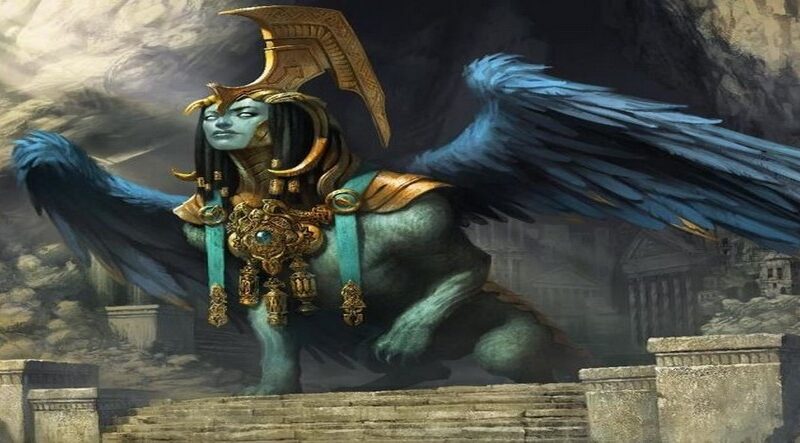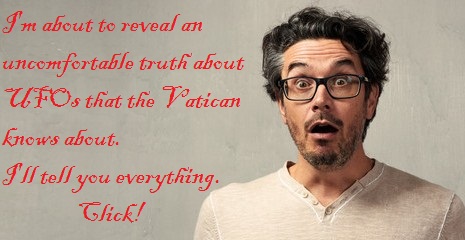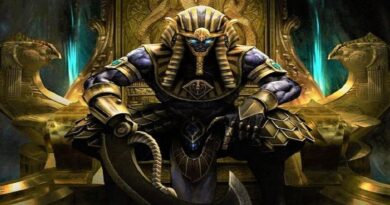Egyptian magic to summon demons
Egyptian magical rituals to call entities from other worlds
We have seen how a universal matrix connects corporeal and non-corporeal extraterrestrial entities of this universe and its parallel ones, energetic forces that can be recalled from the mists of time with rituals and spells. Specific rituals complied with by sorcerers, shamans of every age and tribe who in altered states of consciousness but not only succeed according to precise indications handed down also to recall dimensional entities and carry out evil. The Sumerians, as we have seen, were experts in this art, the same interest in the cult of the dead, the afterlife and what is related to the afterlife can be found in Egyptian culture.
Indeed, many classical writers considered Egypt to be the source of magical knowledge. The antiquity of its civilization, the abundance of temples and pyramids, mysterious deities with heads of animals and birds, mysterious hieroglyphs, rituals in honor of the dead, the deification of the pharaohs created a seductive and mesmerizing atmosphere that for the adherents of the occult has not yet disappeared into the darkness of oblivion.
In ancient Egypt, they believed that magic made it possible to establish contacts between people and gods, as well as among the living and the dead, they resorted to it to ensure comfortable conditions for their future sojourn in the hereafter and to solve important problems of the present earthly life.
Proof of belief in the power and power of magic has come to us since ancient times. One of these is an inscription on a granite stele found between the paws of the Sphinx guarding the pyramid of Chefren in Giza. The inscription tells that the pharaoh Thutmose II, who reigned from 1290 to 1224 BC, tired after hunting, dozed off at the foot of the Sphinx. In a dream, the god Haremahet appeared to him, who ordered him to clean the statue of the Sphinx from the sand that covered it. Upon awakening, Thutmose ordered to immediately begin to carry out the divine will.
In one of the texts of magic the technique for invoking the spirits of the dead is described, or necromancy, is contained in a series of instructions preserved in the museums of London and Leiden or in the Parisian Louvre. Detailed descriptions can be found on how to establish contact not only with the gods and spirits of the realm of light, but also with demonic beings and lost and ruined souls.
Necromancy was born and developed due to the desire of people to penetrate the secret of hidden and unknowable phenomena and events, both present, past and future. It was believed to allow one to receive messages, advice, and instructions from the other world, as well as make requests to the creatures that reside there. Of course, all these actions were accompanied by certain rituals, often very complex.
The knowledge of the ancient Egyptians about the existence, appearance and occupation of demons was much broader and richer than the knowledge of European magicians during the Middle Ages and the Renaissance. A great deal of information about underground demons is contained in the texts of the ancient Egyptian Book of the Dead. Some of them protected the gates of the afterlife from the penetration of the “wicked”, others roamed the subterranean possessions of Osiris, the bodies of the dead served them as food in this gloomy world, and they quenched their thirst with their blood. With demons the Egyptian magician, on his own initiative, did not come into contact, as a rule, and if they came without invitation, he would drive them away with the help of mirrors, various amulets and spells.
The main content of the magical rituals was spells. With their help, they were able to summon creatures from the other world, subordinated them to the will of the caster, and sent them back to their permanent place of residence.
The style of spells was always pleading and demanding, they were pronounced or read with special intonations, accompanied by special gestures and postures, and all this was a very impressive sight. Each wizard had his own set of spells, which he often kept in the strictest confidence, because it was believed that if a “colleague” discovered them or even worse, tried to use them, they would lose their power.
Here is an example of a spell and its implementation, taken from an ancient text and reported in the famous novel “Pharaoh” by Boleslav Prus (translated by E. Troepolsky): “Then the magician raised his hands and said:” Heavenly Father “, meek and merciful, purify my soul … Here I am, trusting in God’s help, I am visionary and fearless … I am powerful – I call and summon you … Appear to me, obedient, in the name of Aye, Saraye … In the name of the almighty and eternal God … Amorul, Taneha, Ra-bur, Latisten … I summon you and call … In the name of the star, which is the Sun … “Suddenly all was quiet. In front of the altar a ghost appeared in a crown, with a rod in his hand, astride a lion. “Beroes! .. Beroes! .. “said the ghost in a dull voice.” Why are you calling me? ..
A special type of “applied” witchcraft as we have seen to be expressed in Sumerian culture as well was the creation of substitute bodies, which were used exclusively for the purposes of black magic. The ancient Egyptians were sure that if a magician fashioned a statuette of a person with wax and began performing certain rituals on it, their results would influence the person serving as the prototype for the statuette. The prevalence of such manipulations with wax dolls is evidenced, in particular, by the inscriptions on the sarcophagi of the Middle Kingdom era (2050-1750 BC), as well as by ancient texts.
In the so-called “Li Papyrus” there is an entry like this: “Pentiboon, who was the manager of the estate, said to him,” Bring me a book that would give me power and magical power. “He brought a book on magic from the Pharaoh’s library , the great god, his teacher, and went to use divine power against his people. His assistant El-rem made statuettes of wax people and performed various spells on them. And so they both unleashed diseases, plagues and other misfortunes on people “. And here is a fragment of the text from Rollin’s Papyrus: “I resorted to witchcraft to cause and bring bad luck. I made several wax figurines of deities and people, in order to cause dryness and necrosis of the limbs of these people. I gave these figures to Rabbekameo, whom the divine Ry did not appoint as governor of the house”
This papyrus tells of the Conspiracy of the Ministers of the Harem against Ramses III, the last important pharaoh of the New Kingdom, who ruled from 1188 to 1157 BC and some sorcerers who practised black magic and turned their art against the pharaoh also took part in the conspiracy. and his courtiers. But, as the papyrus continues, the conspiracy was uncovered. The conspirators, the main of whom were recognized as two sorcerers, were tried. One of them was brutally executed, the other was forced to commit suicide.
However, not only the conspirators resorted to the services of black magicians, but also the highest Egyptian nobility, up to and including the pharaohs. After all, they also had to fight their enemies literally for life or death. In these cases, the book of the demon Apopis probably served as a guide, suggesting, for example, this method of destroying enemies: “Make wax figures of all the living and inanimate enemies of the Pharaoh and write the names of these people with paint green on them. Put the figures in a box, spit on them, and then step on them with your “unclean” left foot. After that, stab them with a knife and throw them into the burning straw, which you then extinguish by pouring it with the urine of an adult woman. “
The amulet has been considered one of the most powerful magical means since ancient times. Its purpose is to protect its owner from all kinds of troubles. According to the ancient Greek writer and historian Pliny the Elder, amulets were most prevalent in ancient Egypt during the New Kingdom (1580-1085 BC). The amulets were made of precious and simple stones, metal, glass, wood. They could be pieces of papyrus or cloth with spells or designs of magical symbols. Sometimes amulets in the form of small objects were placed inside belts sewn on clothes.
Magic in ancient Egypt was closely associated with medicine and healing. The greatest of the wise men, sorcerers and healers of the Egyptian tradition was considered Imhotep, the supreme dignitary of the pharaoh Djoser, who ruled around the first half of the 28th century BC
The name and titles of Imhotep – the builder of the first pyramid, the stepped tomb of Djoser at Sakkara – are preserved on the statue of the pharaoh in the memorial temple of this pyramid. However, the healer’s fame surpassed all other merits of Imhotep, and he was later deified as the patron saint of healing, especially revered in Memphis. From the middle of the first millennium BC the Greeks began to identify him with Asclepius; the god of healing, who also had the ability to resurrect the dead (in ancient Roman mythology, Asclepius corresponds to Aesculapius).
One of the most important tasks of magicians in ancient Egypt was to protect the secrets and peace of their former masters and patrons after their transition “to another world”. They coped perfectly with this task both during their life and after their death. There is much evidence of how, even in ancient times, fate cruelly punished the thieves and desecrators of the tombs of Egyptian nobles.
But the spells seem to be in place to this day. How else to explain the aforementioned series of mysterious deaths of many of those who took part in the autopsy and the search for the tomb of the pharaoh Tutankhamun. However, few people know of another equally mysterious and disturbing story associated with the opening of the tomb of the priestess of the god Amun-Ra, who lived in the city of Veset some 3600 years ago and was buried in the Valley of the Kings near Biban El-Mulyuk.
Her tomb was looted in the 60s of the XIX century, the mummy of the priestess did not survive, but the sarcophagus with the image of a female face of demonic beauty remained intact. It is said that all those who dealt with this sarcophagus were overwhelmed by an untimely and inexplicable death. Including all the owners who have succeeded each other. A photographer who took the photos of the sarcophagus would have seen on one of the prints, as if it were alive, the face of a beautiful Egyptian woman with a menacing smile on her lips. The last owner of the relic saved his life in extremis by donating it to the British Museum. but the spell still worked. When it became evident that, after the acquisition of the sarcophagus,
Meanwhile, the Americans became interested in the sarcophagus, and in 1912 its secret delivery to the United States was organized. The relic was packed in a simple box, the bill of lading and the customs declaration was recorded as a “box with books”. On 10 April 1912 she was loaded in Southampton on board the most modern and reliable steamship of the Royal Postal Service. This steamer was the Titanic on its first business trip. And on the night of April 14-15, it collided with a huge iceberg and sank. Of the 2,227 passengers, only 705 survived. As it turned out, on the Titanic’s route, the fatal iceberg was the only one within several tens of miles.
Cesare Valocchia





